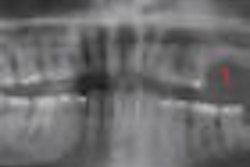Researchers from Yale University have uncovered the molecular "tricks" used by bacteria to fight the effects of fluoride (Science, December 22, 2011).
The researchers found that sections of RNA messages called riboswitches -- which control the expression of genes -- detect the buildup of fluoride and activate the defenses of bacteria, including those that contribute to tooth decay.
"These riboswitches are detectors made specifically to see fluoride," stated senior study author Ronald Breaker, PhD, chair of the department of molecular, cellular, and developmental biology, in a press release.
Fluoride in over-the-counter and prescription toothpastes is widely credited with the large reduction in dental cavities, which is largely caused by fluoride bonding to the enamel of teeth. However, it has been known for many decades that fluoride at high concentrations also is toxic to bacteria, causing some researchers to propose that this antibacterial activity also may help prevent cavities.
The riboswitches work to counteract fluoride's effect on bacteria.
"If fluoride builds up to toxic levels in the cell, a fluoride riboswitch grabs the fluoride and then turns on genes that can overcome its effects," Breaker said.
Since both fluoride and some RNA sensor molecules are negatively charged, they should not be able to bind, he noted.
"We were stunned when we uncovered fluoride-sensing riboswitches" Breaker said. "Scientists would argue that RNA is the worst molecule to use as a sensor for fluoride, and yet we have found more than 2,000 of these strange RNAs in many organisms."
The new findings from Yale only reveal how microbes overcome fluoride toxicity. The means by which humans contend with high fluoride levels remains unknown, Breaker noted. The use of fluoride has had clear benefits for dental health and that these new findings do not indicate that fluoride is unsafe as currently used, he added.



















